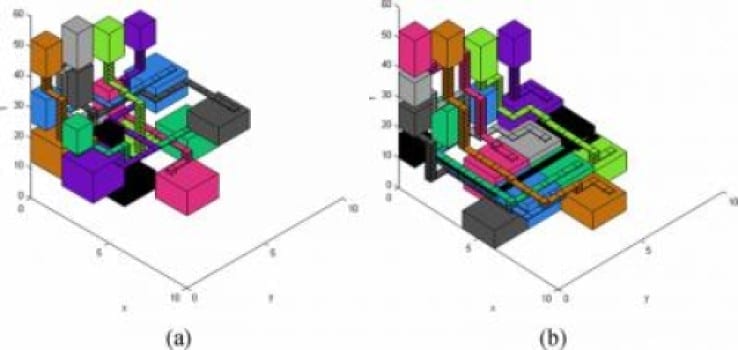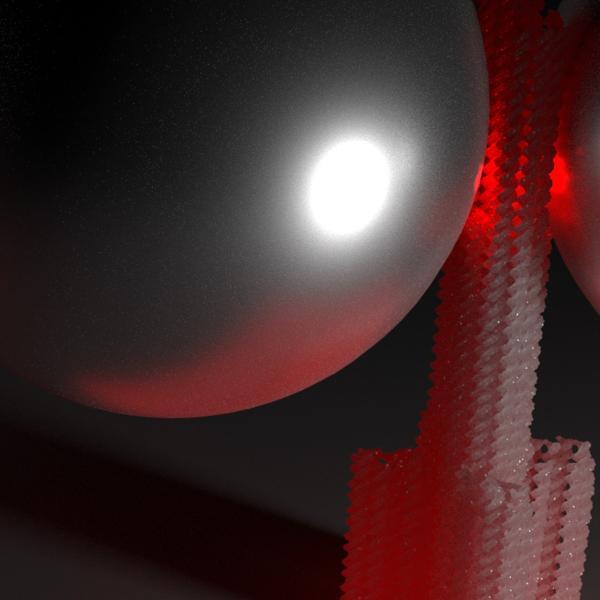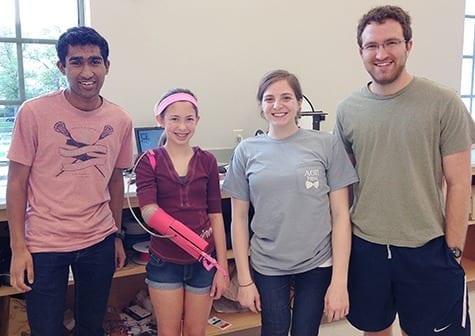
These labs-on-a-chip would not only be quick—results are available in minutes—but also inexpensive and portable.
When you get sick, your physician may take a sample of your blood, send it to the lab and wait for results. In the near future, however, doctors may be able to run those tests almost instantly on a piece of plastic about the size of credit card.
These labs-on-a-chip would not only be quick—results are available in minutes—but also inexpensive and portable. They could be used miles from the nearest medical clinic to test for anything from HIV to diabetes. But as powerful as they may be, they could be far better, says Shiyan Hu, an associate professor of electrical and computer engineering at Michigan Technological University.
Generally, a lab-on-a-chip (LOC) can run no more than a test or two. That’s because the chips are designed manually, says Hu. If the LOC were made using computer-aided design, you could run dozens of tests with a single drop of blood.
“In a very short time, you could test for many conditions,” he said. “This really would be an entire lab on a chip.”
With PhD student Chen Liao, Hu has taken the first step. “We have developed software to design the hardware,” he said. Their work focuses on routing the droplet of blood or other fluid through each test on the chip efficiently while avoiding any chip contamination.
“It has taken us four years to do the software, but to manufacture the LOC would be inexpensive,” Hu said. “The materials are very cheap, and the results are more accurate than a conventional lab’s.”
Ultimately, Hu aims to fabricate their own biochip using their software.
The Latest on: Labs-on-a-chip
[google_news title=”” keyword=”Labs-on-a-chip” num_posts=”10″ blurb_length=”0″ show_thumb=”left”]
via Google News
The Latest on: Labs-on-a-chip
- Yuga Labs announces restructuring in push towards 'Otherside' metaverse developmenton April 27, 2024 at 1:33 pm
Yuga Labs, the team behind Bored Ape Yacht Club, is restructuring to focus its efforts on building the 'Otherside' metaverse.
- The Azuki NFT Creator Chiru Labs Is Looking For People With NFT Knowledgeon April 27, 2024 at 7:05 am
The NFT firm Azuki, which is now hunting more NFT builders, is a testament that NFT projects are slowly recovering.
- MIT Engineers Unveil Chip Boosting Smartphone AI and Security, Balancing Efficiency with Data Protectionon April 25, 2024 at 10:21 pm
MIT engineers developed a chip to protect personal data and enhance AI applications' efficiency in health-monitoring apps.
- Bioelectronic chip detects vitamins C and D in saliva in under 20 minuteson April 24, 2024 at 9:39 am
Researchers at the University of São Paulo (USP) in Brazil have developed a bioelectronic chip that simultaneously detects vitamins C and D in body fluids. It is flexible and easy to see and can be ...
- This tiny chip can safeguard user data while enabling efficient computing on a smartphoneon April 23, 2024 at 3:56 pm
A new chip can efficiently accelerate machine-learning workloads on edge devices like smartphones while protecting sensitive user data from two common types of attacks -- side-channel attacks and ...
- Equity Labon April 21, 2024 at 10:01 pm
The Impact Media Fund is continuing to take contributions for the Equity Lab. Click on the button below to donate. Cathie Anderson covers socio-economic mobility. She joined The Bee in 2002 and ...
- Why lab designers should aim to ‘speak the language’ of scientistson April 21, 2024 at 5:00 pm
we can more easily chip away at projects from multiple viewpoints to find alternative, and more sustainable, design solutions. It helps us solve the related challenges of risk and sustainability. The ...
- Silicon Valley’s Next Unicorns: 3 Tech Disruptors to Buy on Weaknesson April 20, 2024 at 4:00 am
InvestorPlace - Stock Market News, Stock Advice & Trading Tips In his book “100 Baggers,” investors Christopher Mayer ...
- Obscure $10 billion chip firm you never heard of finally delivers crucial tech for AI future — Astera Labs showcased its Aries 6 PCIe retimer board as it targets future ...on April 19, 2024 at 10:38 pm
A stera Labs, a relatively unknown semiconductor company with a $10 billion market value, recently showed off its new Aries 6 PCIe retimer board, which it is now sampling to leading AI and cloud ...
- Mini brains and lab-on-a-chip wearables: Jumar Bioincubator officially begins its mission to build "Australia's next CSL"on April 17, 2024 at 5:00 pm
Ovulation bio-sensing startup Symex Labs has developed a wearable "lab-on-a-chip" solution that provides continuous "set-and-forget" monitoring of hormones to more conveniently and effectively ...
via Bing News










